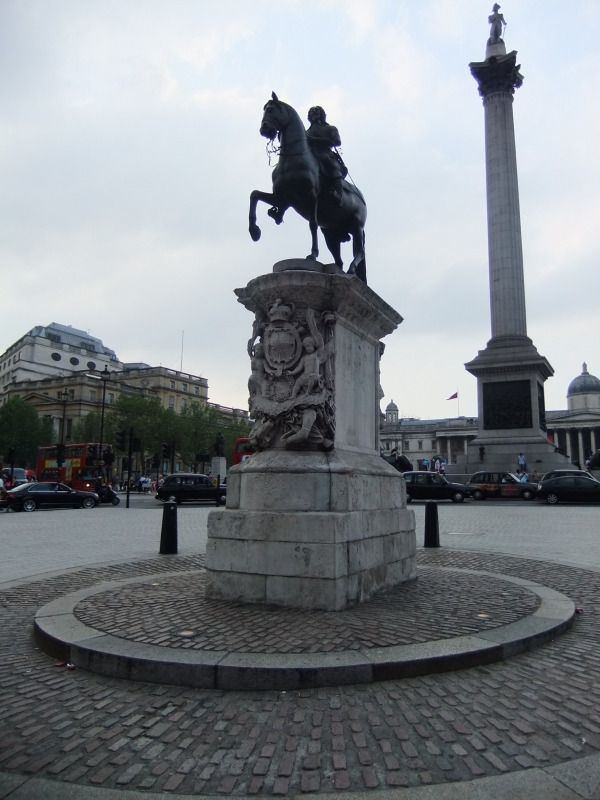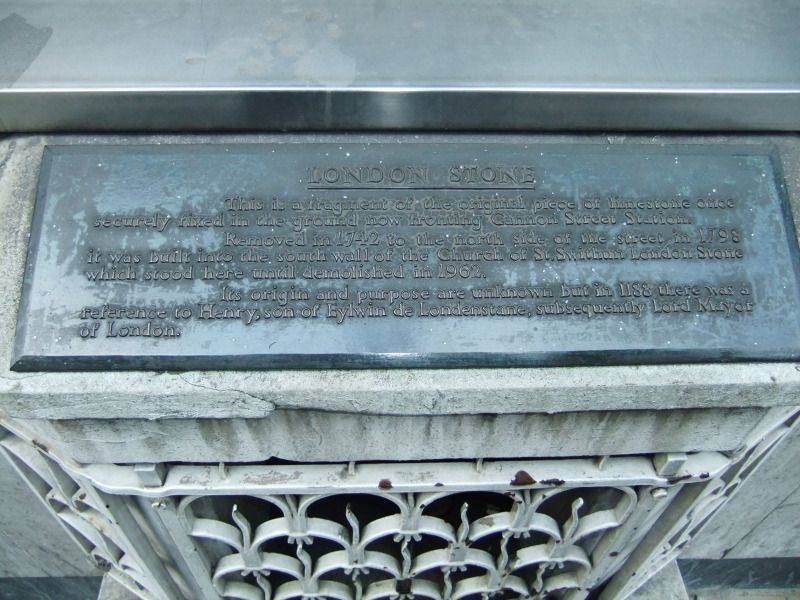The below picture shows the statue of King Charles I in Trafalgar Square. The site of the statue marks the current centre of London, from which all mileage distances on road signs are measured. This statue has not always been here however, originally, “Eleanor’s Cross” stood on this site and marked the centre of London.
In 1290 King Edward’s wife, Queen Eleanor, died of fever while in Lincoln. The Queen’s body was taken from Lincoln to Westminster Abbey for a state burial. To honour his wife, the King decided that memorial crosses would be installed along the route of the funeral procession and crosses (twelve in total) were installed at Lincoln, Grantham, Stamford, Geddington, Hardingstone, Stony Stratford, Woburn, Dunstable, St. Albans, Waltham, West Cheap and what is today Trafalgar Square. Of these twelve crosses, only three outside London still remain (Geddington, Hardingstone and Waltham). The cross that was at Trafalgar Square was subsequently replaced by the statue of King Charles I, but a replica of the original Eleanor’s cross (circa 1860) can be found today at Charing Cross Station.
During Roman times, the centre of London was in a different location, at the site of the Roman Governor’s mansion, situated on what is today Cannon Street, and marked by a stone known as the "London Stone". If you walk along Cannon Street you will see a grill in the wall at 111 Cannon Street (pictured below). The London Stone lives within this grill. However, on my visit, the stone was not present and the property it adjoins was vacant, and it seems that the stone may be moved to a new location soon!
The London Stone is linked to a few myths including that the stone was part of an altar built by Brutus of Troy, and that the stone was the stone from which King Arthur withdrew the legendary "Sword in the Stone".
Pictures, London (May 2012)



This is all really interesting stuff. I hadn't realized that Brutus of Troy was linked to London at all. I did a post about the Brutus legend in the South-West (Trojans in Taunton and Totnes) last year, and last week I went to a National Trust property near here called Lytes Cary, where one of the early residents was an Elizabethan author name Henry Lyte, who was one of the first people to write down the Brutus legend in his book The Light of Britain (1588).
ReplyDeleteAndrew, so Totnes has a "Brutus Stone", and the London Stone is linked to Brutus (so is it also a Brutus Stone?). I wonder if there are any more in the UK!
ReplyDelete